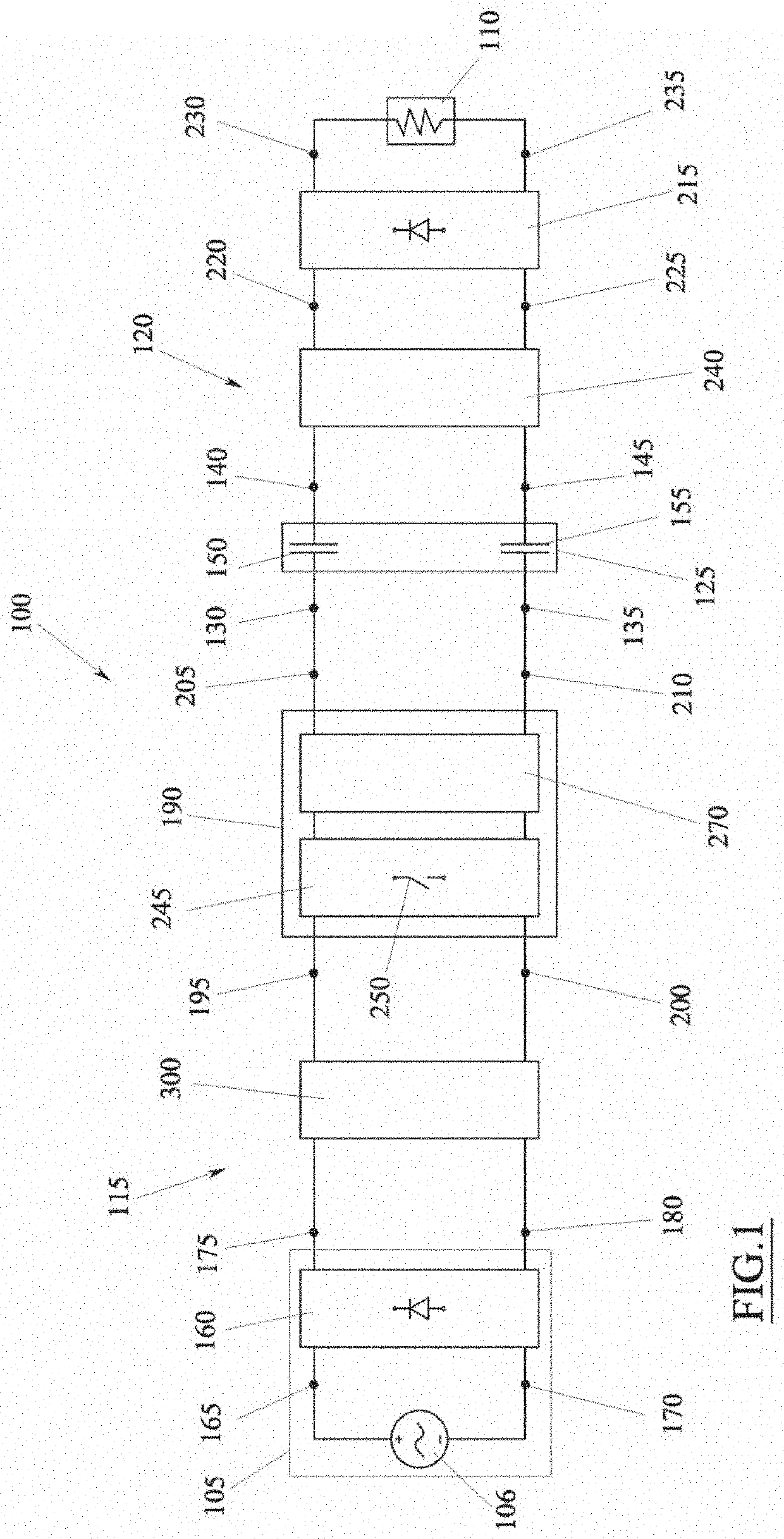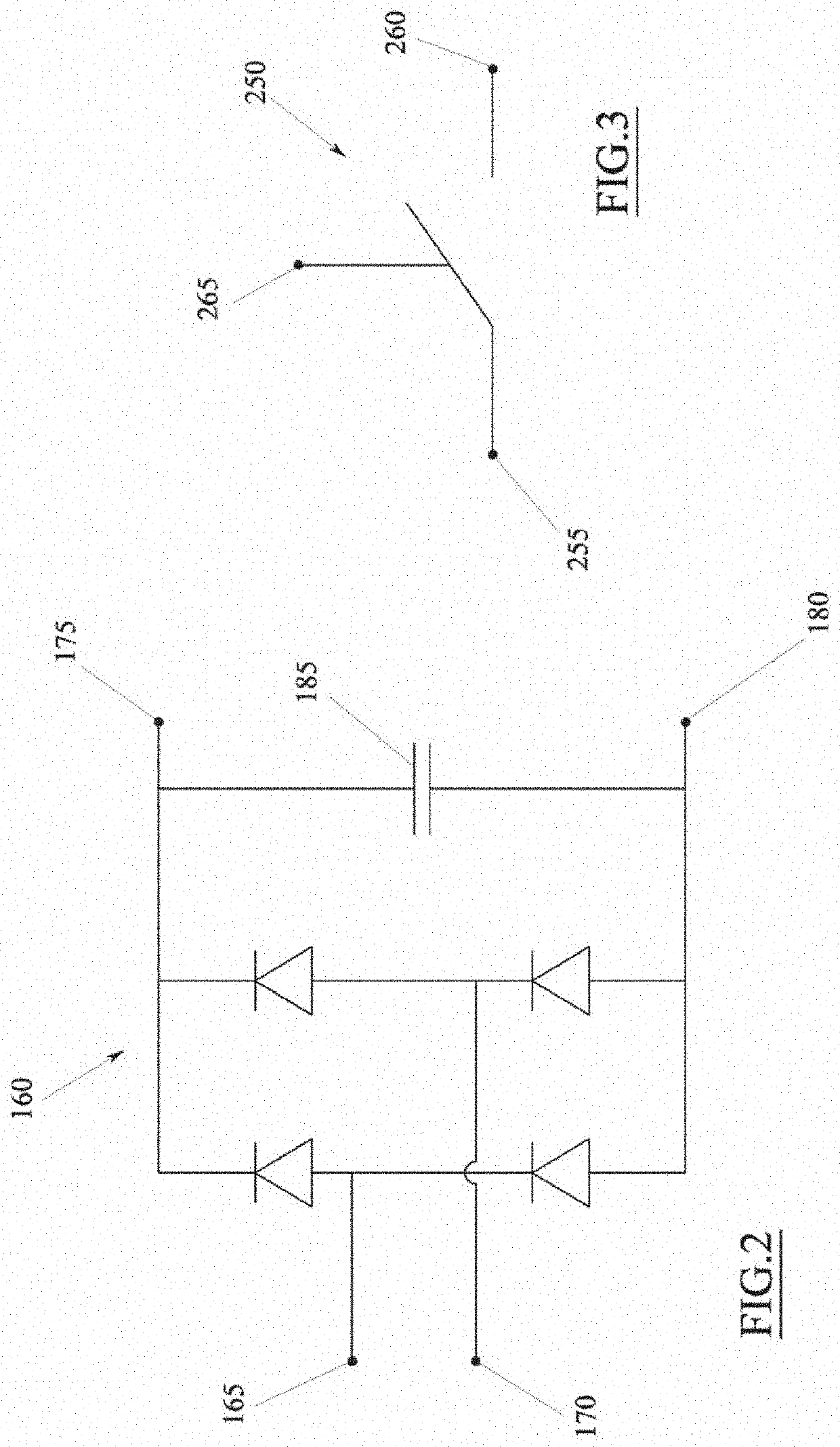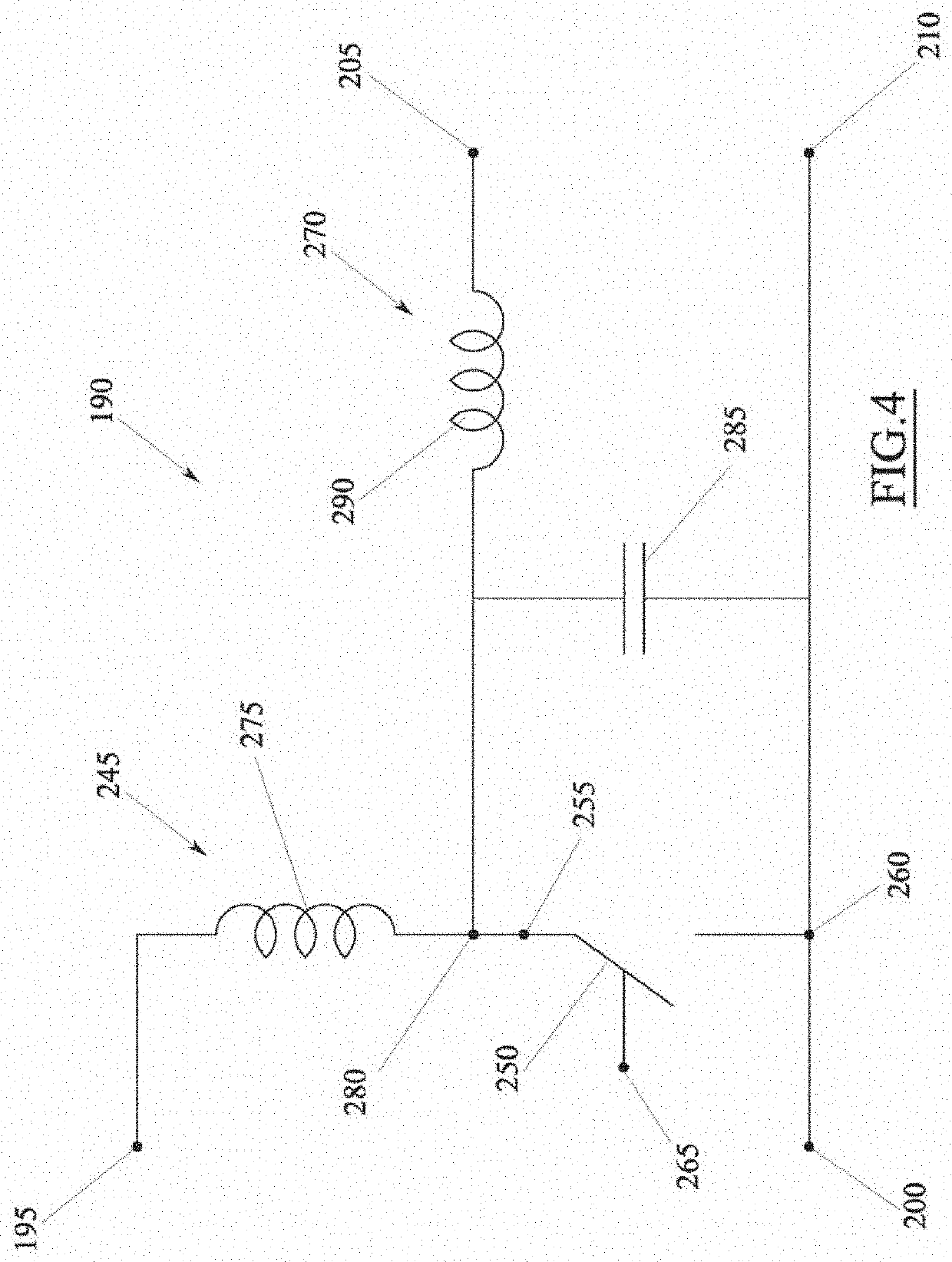Apparatus for transferring electrical power to an electrical load with converter
- Summary
- Abstract
- Description
- Claims
- Application Information
AI Technical Summary
Benefits of technology
Problems solved by technology
Method used
Image
Examples
Embodiment Construction
[0117]An embodiment of the present invention provides an apparatus 100 for transferring electrical power from an electrical source 105 to an electrical load 110.
[0118]The electrical source 105 is generally a source of direct voltage or comparable to a direct voltage.
[0119]In accordance with the illustrated example, the electrical source 105 can comprise a rectifier, globally indicated with 160, which is adapted for receiving in input an alternating voltage coming from a source of alternating voltage 106, for example a common electrical distribution network, for converting (rectifying) said alternating voltage into a direct voltage (or comparable to a direct voltage) and for outputting said direct voltage.
[0120]The source of alternating voltage 106 can be adapted for supplying an alternating voltage of variable value depending on the country or the use (e.g. industrial or domestic).
[0121]Purely as an example, the source of alternating voltage 106 can be a 50-60 Hz, 90-250V AC network...
PUM
 Login to View More
Login to View More Abstract
Description
Claims
Application Information
 Login to View More
Login to View More - R&D
- Intellectual Property
- Life Sciences
- Materials
- Tech Scout
- Unparalleled Data Quality
- Higher Quality Content
- 60% Fewer Hallucinations
Browse by: Latest US Patents, China's latest patents, Technical Efficacy Thesaurus, Application Domain, Technology Topic, Popular Technical Reports.
© 2025 PatSnap. All rights reserved.Legal|Privacy policy|Modern Slavery Act Transparency Statement|Sitemap|About US| Contact US: help@patsnap.com



